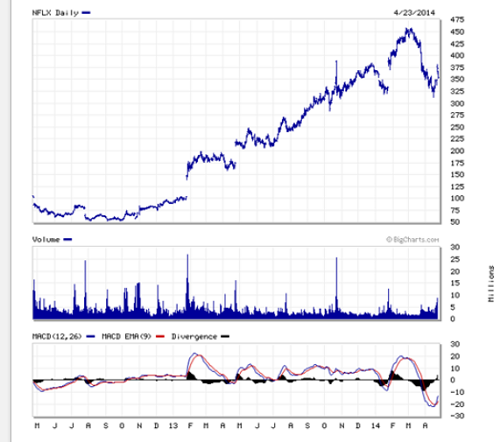You may wish to consider a non-directional strategy such as selling option premium as part of a contrarian approach towards diversifying your overall investment portfolio.
Dictionary.com defines the word contrarian as: a person who takes an opposing view, especially one who rejects the majority opinion, as in economic matters. Being a contrarian is doing the opposite of what the crowd is doing. Human nature is such that doing so is difficult in practice, yet it is often a wise decision. Successful investors such as Warren Buffet are often considered to be contrarians. John D. Rockefeller famously said, “The way to make money is to buy when blood is running in the streets”. This is a colorful way of saying that successful investing isn’t about chasing the latest hot trends or fads, rather it’s about taking positions that are often counterintuitive, unconventional and opposed to “conventional wisdom”.


Daytrader by Udo, on Flickr. This work is licensed under a Creative Commons Attribution-NonCommercial 4.0 International License.
Trading the Trend
When speaking of trading, trying to figure out when a trend exists, if and when to hop onto the trend, or if and when the trend will change is always difficult. In a falling market, attempting to buy into the trend is sometimes equated to trying to “catch a falling knife”. In an upwardly trending market, attempting to continually pick a top can result in financial disaster. Just ask all those that have been short on NetFlix and Tesla over the last year or two.
Even if a trend can be identified, it’s never easy to maintain a position with the trend. If positioned correctly one can still get stopped out among all the price volatility and static and sustain losses. Then, once out of the market, the prices can often proceed in the direction you projected, leaving you quite frustrated. One can be correct about market direction yet still not profit. Also, what’s to be done during those times when one projects that a particular market will trade in a sideways pattern for some time?
Is there an approach to trading that can appeal to a contrarian perspective and sidestep the guesswork, stop losses, static and chatter?
A Contrarian Non-directional Approach
A non-directional approach attempts to benefit from markets that trade in a price range over a particular period of time. One non-directional strategy is collecting option premium via the selling of covered option spreads. These are sometimes referred to as multi-legged option spreads, or complex option spreads.
Remember, anytime an option is purchased a premium is paid to the seller. One can choose to be a buyer or seller of any option. Buying an option can offer a large profit potential with limited risk, while selling an option can have a limited profit potential with a large degree of risk.
Why would anyone sell (write) options to collect relatively small premiums while accepting a relatively much larger degree of risk? Because, an option seller operates under the same premise that insurance companies do: statistically speaking they expect to receive many relatively small premium payments and only on occasion payout claims. Over time, on a net basis, they intend to collect more premium than they pay out.
Options on Futures
One market in particular that attracts many premium sellers are options on the electronically traded E-mini S&P 500 futures contract at the Chicago Mercantile Exchange. The S&P 500 futures contract represents 500 large-cap stocks across 9 market sectors (utilities, energy, materials, health care, consumer staples, industrials, technology, financials and cyclicals), therefore it represents a diversified equity portfolio.
Looking at a current chart of the June E-mini S&P 500 futures contract, one will note that a large move on any given day might be 2%. A daily move in an individual growth stock can sometimes be 10% or more.
Individual growth stocks are typically much more volatile compared to a broad market index such as the S&P 500. How can this dynamic be used to your advantage? How can you “trade volatility”? Is this also an income generation opportunity? There are many benefits to a non-directional approach, also called delta-neutral, using E-mini S&P 500 futures options:
- No need to determine market direction.
- Less daily price variability compared to individual stocks.
- Potential for successful trades in bullish, bearish or neutral market conditions.
- Performance of trades can have little correlation to the stock market as a whole.
- Offers a diversification opportunity from real estate, stocks and bonds.
- Offers an income generation opportunity.
- Part of a booming alternative investment asset class. In fact, the Tabb research group published an article in February, 2014 entitled, Options on Futures: A Market Primed for Further Expansion. Some notable quotes included:
- Futures options trading has exploded in recent years as a number of forces have merged to create an enticing proposition for investors.
- TABB Group expects that futures options activity will continue to grow strongly as financial market participants increasingly use these products as part of their investment and hedging strategies.
- Going forward, TABB expects another record year for futures options in 2014, with volume growth at least 15% year over year.
- Equity index options have seen 54% volume growth from 2012 to 2013.
- There is particularly strong interest in futures options from the volatility trading crowd as they look for various ways to exploit short-term trading opportunities. In addition, the use of options by traders and investors implementing delta-neutral strategies and futures traders should continue to support new strategies and firms entering the futures options markets.
With the broader equity market up about 30% in 2013, with the S&P 500 and DJIA futures up only fractionally year-to-date, with the Russell 2000 and Nasdaq 100 futures both lower year-to-date, there’s no telling where the markets may head next. Instead of attempting to always correctly predict market direction, you may wish to consider a non-directional strategy such as selling option premium as part of a contrarian approach towards diversifying your overall investment portfolio.
You may download a PDF version of this article at Altavest Worldwide Trading, Inc. (www.altavest.com), a commodity futures and options trading firm. Altavest, in conjunction with its educational affiliate, FuturesANIMAL (www.futuresanimal.com), educates clients via webinars and live seminars. Altavest offers a proprietary user-friendly options trading platform with daily suggested trades and risk and profit controls, as well as full-service trading advisors at discounted commission rates and managed accounts. There is a risk of loss in trading futures & options. Past performance may not be indicative of future results. Proprietary automated trading software cannot be resold.




